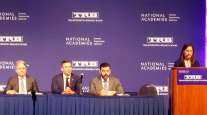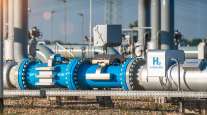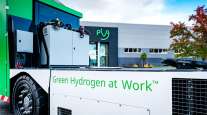Staff Reporter
EPA Clean Ports Grants Pay for Hydrogen Equipment, Planning
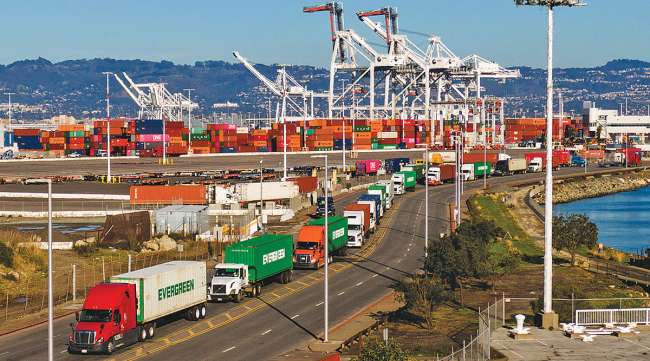
[Stay on top of transportation news: Get TTNews in your inbox.]
Port facilities across six states will receive millions of dollars in federal funding for the purchase of zero-emission vehicles and fueling and charging infrastructure through a round of grants recently awarded by the U.S. Environmental Protection Agency.
Ports in California, Hawaii, Michigan, Illinois, Alaska and South Carolina will receive a share of about $2.9 billion in Clean Ports Program grants allocated through the Inflation Reduction Act. The grants were earmarked to help states lower emissions at the nation’s ports through the purchase of zero-emission port equipment and infrastructure.
“The proposed projects include over 1,500 units of cargo handling equipment, 1,000 drayage trucks, 10 locomotives and 20 vessels as well as shore power systems and solar power generation,” EPA said when announcing the winning applicants. “Funds will support climate and air quality planning and the purchase of battery-electric and hydrogen-powered port equipment.”
RELATED: Canada Orders Ports to Restart as Labor Disputes Choke Trade
The grant program is split into two initiatives: the Zero-Emission Technology Deployment (ZE Tech) Competition, which is awarding a total of $2.8 billion to successful applicants for equipment and infrastructure, and the Climate and Air Quality Planning Competition, which has $60 million in funding to help U.S. ports determine how to remove carbon emissions from their operations.
The ZE Tech hydrogen port equipment and infrastructure grants will be given to the ports of Oakland and Honolulu and the Illinois International Port District.
RELATED: Public-Private Partnerships Propel Hydrogen Infrastructure
The Port of Oakland will receive $322 million in what the port described as the biggest federal payment toward a San Francisco Bay Area project to reduce seaport cargo operation emissions. The funds will help port officials buy 663 pieces of zero-emissions equipment, including 475 drayage trucks and 188 pieces of hydrogen and electric cargo-handling gear.
“This funding will go a long way toward decarbonizing the Oakland supply chain and providing environmental and economic benefits for the region,” said port board President Michael Colbruno.
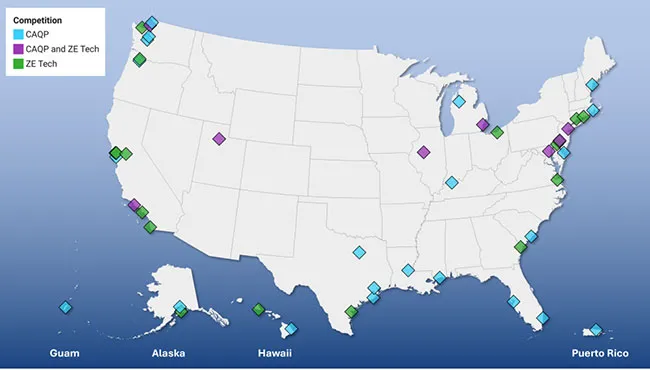
(Environmental Protection Agency)
Also, the grant will pay for charging infrastructure, solar generation and a storage system for battery energy.
“Converting hundreds of pieces of cargo-handling equipment to zero emissions at the Port of Oakland opens the door to good-paying jobs for local residents,” said Joyce Guy, executive director of the West Oakland Jobs Resource Center.
Hawaii’s transportation department was awarded $56.7 million to buy hydrogen cargo-handling tractors for the Sand Island Container Terminal. The project also includes building hydrogen storage and fueling infrastructure in Honolulu Harbor.
“These projects, especially the hydrogen vehicles, are the needed catalyst for transformational change across cargo operations in Honolulu Harbor,” said Ed Sniffen, the state’s transportation director. He also thanked federal government officials for helping the state “continue to adapt our commercial harbor facilities for future impacts of climate change.”
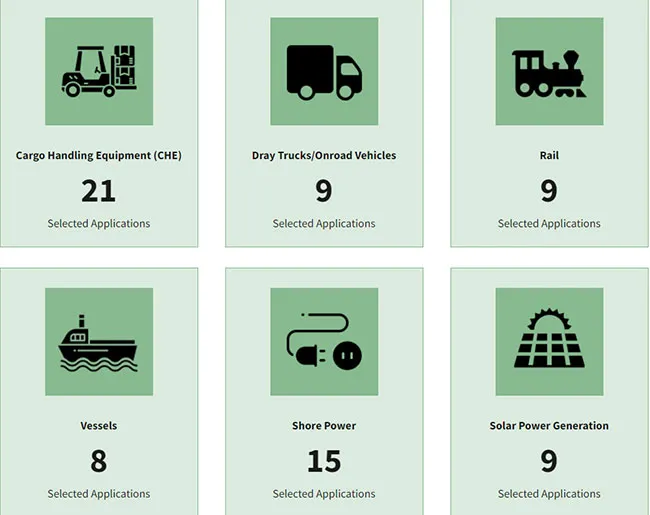
(Environmental Protection Agency)
Illinois’ $92 million EPA grant will go toward purchasing electric-powered drayage trucks, cargo-handling equipment, locomotives, a railcar mover and other vessels, along with hydrogen locomotives and hydrogen fueling infrastructure. The state also will allocate some of the funding for electric charging infrastructure, solar generation and a system to store battery energy.
The Detroit/Wayne County Port Authority will spend its $3 million EPA award in three planning areas: examining zero-emission power for barges, evaluating hydrogen fueling for medium- and heavy-duty vehicles and equipment at port-related facilities that service freight corridors and strategizing ways to build a zero-emissions workforce.
The facility, located along the Detroit and Rouge rivers, has 18 terminals that move more than 8 million tons of cargo yearly. It aims to transition to hydrogen and green methanol to ensure it has no carbon emissions by 2040.
Host Seth Clevenger and Features Coordinator Mike Senatore take you behind the scenes to unveil the 2024 Top 50 Global Freight Companies. Tune in above or by going to RoadSigns.ttnews.com.
Mark Schrupp, the facility’s executive director, said, “Port Authority is honored to receive this funding and begin the transformation of Port operations toward zero emissions while at the same time ensuring local residents are well-trained and included in the jobs of the future.” Per facility data, more than 10,000 trucks move goods and cargo in the Port of Detroit region every day.
“This grant will support our ongoing efforts to decarbonize the movement of fuel and bulk cargo,” said Harry Warner, CEO of Detroit-based Waterfront Petroleum Terminal Co..
Other states receiving planning grants are South Carolina and Alaska. The Port of Charleston was awarded $1.325 million to update its emissions inventory and seek ways to incorporate hydrogen equipment for vehicle fueling. It will also examine community engagement and workforce training.
The Don Young Port of Alaska, owned by Anchorage, is getting a grant of $1.93 million to help it develop an inventory for its emissions output and conduct an energy transition plan that will include a safety study for hydrogen equipment, workforce development and public outreach. The facility each year handles some 5.2 million tons of fuel and freight, including containers along with dry, liquid and break-bulk.
Want more news? Listen to today's daily briefing below or go here for more info:



